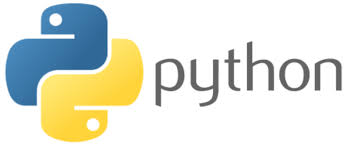CS 100

Scientific Computing
Activity 12 - More practice with functions
Create a file called activity12.py in cs100/ch2. As you work through the following problems, pay careful attention to whether a function should print something or instead return something. Notice how that effects how a function is called.
- Write a function called
factorialthat takes one parameter (a nonnegative integer). The function will return the factorial of the number. Call your function to test it. For example,result = factorial(5) print(result) # it should print 120 - Write a function called
isEventhat takes one parameter (a nonnegative integer). The function will return the boolean valueTrueif the given number is even, otherwise, it will return the boolean valueFalse. Call your function to test it. For example,isFiveEven = isEven(5) print(isFiveEven) # it should print False - Write a function called
displayStudentInfowhich accepts two parameters: a string representing a student’s name and a nonnegative integer representing the student’s age. The function should print a sentence about the student. For example, calling your function to test it will look as follows:displayStudentInfo("Emily", 20) # it should print "Emily is a 20 year old student" displayStudentInfo("Bob", 24) # it should print "Bob is a 24 year old student" - Write a function
multiPrintwhich accepts two parameters: a string and a nonnegative integer representing the number of times that the string should be printed (hint: use a for loop). Call your function to test it. For example, callingmultiPrint("repeat", 5)will print to the Shell the following:repeat repeat repeat repeat repeat - Write a function
getGradewhich accepts one parameter: a nonnegative integer score between 0 and 100. The function should return the string “A”, “B”, “C”, “D”, or “F” using the standard grading scale. Call your function to test it, for example:myGrade = getGrade(89) print(myGrade) # should print B - Write a function
positivitywhich accepts one parameter: an integer n. The function should print either “positive number”, “zero”, or “negative number” depending on the value of n. Call your function to test it. For example,positivity(5) # should print "positive number" positivity(-10) # should print "negative number"
If you finish early
-
Write a function
getRandomNumber13that takes no parameters and returns a random number between 1 and 13 using only functions we have discussed so far. Hint: Use therandom()function from therandommodule, which returns a number in the range [0,1), and multiply it by 13 to get a decimal value x in the range [0.0, 13.0). Next, return the ceiling of x. -
Write a function
getRandomNumber4that takes no parameters and returns a random number between 1 and 4. Hint: use the same idea as above. -
Write a function
getRandomCardwhich will return a string consisting of a random card in a standard deck of 52 cards. For example, it might return “4 of clubs” or “Ace of diamonds”. Hint: use yourgetRandomNumber13andgetRandomNumber4to determine the face value and suit. Call your function to test. -
Play this interactive text-based game. Notice how there’s a limited set of inputs that the user can type. Depending on what the user types, something happens. Think about how you might make an interactive story of your own!
How to submit
Submit your activity12.py file to Moodle.